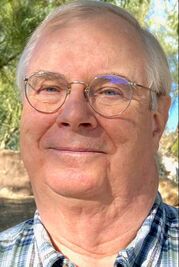 Peter Gow Peter Gow A while ago, before the Solstice and before omicron became the most feared letter in the Greek alphabet, leaving omega in the dust (for now?), I started asking around about the role of school counselors—our in-house mental health professionals—in the actual planning and management of independent school academic programs. My expectations were low, and generally they were met. Especially as the pandemic rages on, most of these folks’ time and energy is predictably consumed by monitoring and supporting the individual victims—students and faculty in acute personal distress—of the “mental health crisis in schools” that we’re experiencing. But I was really wondering about the role of counseling practitioners in looking at and perhaps helping shape the overall learning experiences of all students in a particular school. We’ve known for decades about the “stress culture” in which many students flounder as they strive to meet the expectations put upon them by families, teachers, schools, peers, and themselves. We know that the school experiences of many students from minoritized communities are even more stressful. We even know that sometimes this stress can be fatal. Initiatives like Challenge Success, Making Caring Common, and even specifically “academic/curricular” initiatives like the Mastery Transcript and the Independent Curriculum Group (now a part of One Schoolhouse) cite stress culture and classroom and institutional inequities as part of their raisons d’être. In a handful of schools, it seems, there is a role for the counselor(s) in guiding students’ overall academic environments. Sometimes this is about generalizing from the experience of individuals in crisis to offer feedback to academic leadership on “the state of the school,” mental health-wise; schools with structures that promote this are to be commended. In my delvings I also reached out to a past student, now a therapist-educator and a former modern language teacher, school counselor, and DEIBSJ professional in several independent schools. In some current work that she is doing to develop a vlog-type platform offering practical advice from a “GenX Auntie” persona to Millennials and Gen Zers, my student touched upon something that struck me powerfully: that “critical thinking” is a social-emotional life skill with ubiquitous application and not just a set of functional academic and practical algorithms. In her formulation, critical thinking is essential to the process of making good human decisions. The important critical thinking that we do, and should be doing all the time, lies at the deepest intersections of self-awareness and situational awareness that encompass all things human and humane: “Wait! If I think about this more carefully I might be able to make a kinder decision?” This model ought to be the core of everything we do as educators. We must never lose sight of the fundamental, inevitable linkage between the “critical thinking” skills educators and institutions like to talk about and the emotional and social environments our students will inhabit until they die. I had just never heard anyone make that connection so explicitly before; generally when educators are talking about critical thinking as a “lifelong learning” skill (or better, habit of mind or disposition), the implied focus seems mostly to be on choosing the right person to vote for, the legitimacy of one website over another, or how to create the most effective sales plan for the company. Critical thinking is generally divorced from the perspectives humans must develop or decisions they must make relative to the social-emotional or ethical/moral sides of things, except in political, civic, or practical ways. Critical thinking in its fullest expression is about understanding and parsing our own values and feelings and knowledge in the human situations and contexts in which we find ourselves—in order to be better, kinder, more emotionally generous and curious human beings. Sure, it’s a handy process for interpreting a poem, understanding the causes of a war, doing a proof in geometry, or analyzing a substance in science class, but it’s not just an academic or instrumental tool. It’s at the heart of achieving our potential as Homo sapiens, the hominid critter that has adapted thinking, discerning, and learning in order to sustain its own evolution. (I know that this invites further critical thinking about how that evolution seems to be going in 2022, but that’s another topic.) I am looking forward to my student’s project coming to fruition so that I can help promote it, but for now her efforts have already given me the lasting gift of a new and important insight. (These insights, which have kept on coming from old students, are a big part of why I hang on in the biz.) As educators we need to think, discern, and learn more deeply and broadly about critical thinking as an essential part not just of academic and economic success but of meaningful, purposeful, and generous living. And then we need to embed this into every aspect of our practice. And ask for help, of course, from our schools’ counselors.
0 Comments
Leave a Reply. |
Don't miss our weekly blog posts by joining our newsletter mailing list below:AuthorsBrad Rathgeber (he/him/his) Archives
July 2024
Categories |

 RSS Feed
RSS Feed